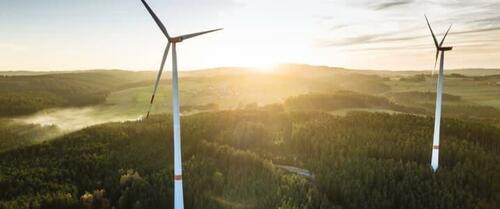Europe’s Green Tech Future Threatened By Limited Investment
By Felicity Bradstock of OilPrice.com
The EU simply cannot seem to keep up with the U.S. when it comes to its green energy policy or China when it comes to green investment. Despite bold promises of establishing a law that would stand up against President Biden’s Inflation Reduction Act (IRA), the EU has so far failed to deliver. And its investment in green energy and related technologies nowhere near compares with the massive levels of funding being pumped into the sector in China. So, can we expect the EU to deliver on its green promises or to fall short of the world’s expectations?
Around a year after the U.S. introduced its most far-reaching climate policy, the IRA, the EU is still finding it difficult to provide such an expansive climate law. The IRA provides companies billions of dollars in grants, subsidies, and tax exemptions to develop green energy projects and clean technologies. This has attracted huge investment in the sector over the last year, with significantly more funding expected in the coming years, thanks to the favourable tax environment. The combination of the IRA and the $108-billion Bipartisan Infrastructure Law, established in 2021, has made the U.S. highly competitive when it comes to clean energy and tech, allowing it to rival its biggest competitor – China. While its spending on the sector may remain lower than in China, it is rapidly becoming a major regional green hub.
But when it comes to Europe’s efforts to develop far-reaching green policies, analysts believe its efforts have been limited due to a lack of cash and coordination. Johanna Lehne, an analyst at the climate thinktank E3G, stated “It’s very much the EU masquerading as if it is doing industrial policy.” She added When you look into the package itself – the fact that there is no new funding, that they are basically leaving it up to member states, that they haven’t been able to create a really cohesive and coordinated approach – it’s not more than the sum of its parts.”
Meanwhile, Niklas Nienaß, a German MEP with the Green party, believes “The big gamechanger that the IRA brought was this immense amount of funding, and there we are falling way behind.”
He added, “I would call [the EU response] a sleight of hand. The magician shows you this card, the IRA response you are looking for, but in fact, we have just shifted one card for another.”
So far, the EU has committed to making 40 percent of strategic net zero technologies within Europe by 2030. The European Commission has also asked member states to contribute an additional $10.9 billion to existing funds, to attract $174 billion in public and private investment to the sector. This is fairly low considering the U.S. forecast of $382 billion in federal spending alone under the IRA.
At the beginning of the summer, the EU prepared itself for the possible loss of two climate change leaders, Frans Timmermans, the European Commissioner in charge of climate and environment policies and Spain’s climate minister Teresa Ribera. Timmermans, who is viewed as a figurehead in the EU’s international climate negotiations, has since quit to run in Dutch national elections. The EU Green lawmaker Michael Bloss explained “We achieved, in terms of laws and legislation in the last three years, something that we didn’t achieve in 10, 15 years before,” in reference to Timmerman’s role in the organisation. In addition, there is a risk that Spanish climate minister Ribera could be ousted from the government by the country’s new conservative leadership. Ribera has represented Spain at COP negotiations since 2018, becoming a key figure in climate change in the EU.
The lack of progress on EU climate policy means the region could become highly reliant on China for its green technology until it is able to develop a strong industry of its own. Research shows that almost half of the world’s low-carbon spending took place in China in 2022, with the country spending $546 billion on green investments, from solar and wind energy to electric vehicles and batteries. That’s almost four times the green investment made by the U.S., which amounted to around $141 billion. Meanwhile, the EU was second to China, with $180 billion of clean energy investments. However, this is expected to shift as the IRA continues to attract greater private spending in the sector.
Several factors have hampered the EU’s climate policy progress, with the risk of falling behind the US when it comes to green law and China in terms of clean tech spending. But there is still time to turn it around. The EU has a strong track record when it comes to climate change and green energy, having invested heavily over the last decade. Further, it has some of the highest environmental standards in the world, with many of its regulations being adopted by other governments, suggesting it could remain a world leader in the green transition if it takes action sooner rather than later.
Tyler Durden
Thu, 08/24/2023 – 03:30
via ZeroHedge News https://ift.tt/xCQrlW5 Tyler Durden
